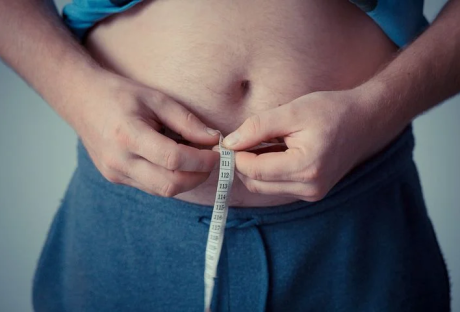Anyone who has ever been called to come and speak or perform in front of a public gathering knows the importance of holding nerves.
From the time we are in school, some of us have dreaded raising our hands and speaking out the right answer even though we know what we are.
We have looked at astonishment at so-called confident individuals and wondered what makes them do things that we cannot.
Common terms like ‘performance anxiety, ‘stage fright’, ‘nervousness’, etc. are all common emotions and feelings that we harbor. The key is- how do we overcome the same?
In this resource article, we are going to help a lot of people come to grips with their nerves. If you are someone who dreads talking in front of a crowd, we recommend that you stick around till the end of the article.
Being ‘Nervous’ Versus Being ‘Excited’- How a Change in Terms Can Help:
‘I am too nervous; I can’t go out there and speak’!
According to leading psychologists, a simple interchanging of the terms nervous and excited can go a long way in dispelling the fear.
Rather than say or think that you are getting the nervous try and say to yourself that you are feeling excited. What you need to understand is that nervousness is associated with being a negative feeling. On the other hand, excitement is something that is deemed to be positive.
This simple exercise wires your brain in a specific way, which then lets the body flow from the same feeling. For example, as soon as your brain starts comprehending that you are nervous, it sends a signal to your body, which then results in stomach pains and churnings.
This is why you need to start feeling excited and look forward to the opportunity. There is a lot of energy that builds up in the body in such situations. The key is to effectively manage the same productively and positively.
The ‘Fight’ and ‘Flight’ Instinct that Defines a Nervous State of Being:
To understand these better leading scientists have spoken about the ‘Fight and Flight Syndrome’. They point out that whenever the brain is faced with a complex and problematic situation, it does one of two things-
- It either wants to escape and run away from the scenario. Or,
- It starts to swing madly to bring the situation under control.
However, in some instances, and I am sure, you are going to relate to this, the brain goes into a hung position. Meaning, it neither fights nor flights. In this situation, the resultant action is a freeze! You get frozen and cannot do anything.
According to experts, the fight or flight instinct needs to be properly managed by telling your brain some important things. What are those things?
In very simple words, not every such scenario is going to be a life and death one. Meaning it is not at all serious and does not amount to anything. Once your brain can understand this, it starts processing emotions and feelings differently. Following this, it then sends these signals to the rest of your body.
List of 5 Important Ways to Help Overcome Nervousness-
In this section, we compile the top recommendations from the leading mental health experts to combat nervousness-
1. Undertake Adequate Preparation-
According to scientists, 50% of all nervousness results from inadequate preparedness. This means that the more you are prepared, the lower will be your levels of nervousness.
Reflect on your school days. Remember when did not know the answers to the question the teacher was asking, how you would try to avoid making eye contact? However, if you were prepared, you would not do the same. Practice makes perfect when it comes to combating nervousness.
2. Focus on ‘You’ providing Value to the Audiences-
Whenever we are nervous, we keep thinking about ourselves. However, the key in this regard is to shift focus to the audiences that are sitting right in front of you. Start thinking of all the value, information, education, and enjoyment that you are going to give to the audiences.
This will put you in comfortable headspace. Let me in you on a little secret. Audiences want everything should be about them. So, you can simply shift the spotlight on them.
3. Take Help from your Friends and Family Members-
Leading comedians and artists have pointed out how having their near and dear ones in the audience helps them overcome stage fright.
This is a simple, yet effective solution to combating nervousness on stage. Many also point out how they keep looking for their near ones in the audience and use them to make eye contact with different sections of the audience. This boosts their confidence and makes their brain understand the support there is on offer.
4. Breathe, Relax and Take it Easy-
Remember, this is not a life-and-death situation. No one is perfect and even the best ones make mistakes. Once you can tune your brain accordingly, you will be able to get a hold of your nerves.
Try breathing and being patient at all times. You can do mistakes, it is alright. Realize that you’ve done the work. The more relaxed you are, the better will you be able to convey. There will always be errors, and you should not worry about making them.
5. Engage with Positive Relaxation Techniques-
In the last few years, relaxation strategies like Yoga, Massages, Aromatherapy, etc. have become very popular. They help channel positive energy within the body and calms down the senses.
Regular meditation is great for your body mentally, as well as physically. By making such healthy practices a part of your daily life, you will be able to control your emotions in a much better way. Try meditating for 15 minutes every morning and see the difference.
The Final Word:
At the end of the day, you need to realize that we are all humans. We have a range of emotions, feelings, and characteristics that make us special in our way.
No two individuals are the same and we must acknowledge the same. By paying attention to all the pointers in the article, you too can expect to combat nervousness and be better prepared for the next time you face the audience.























